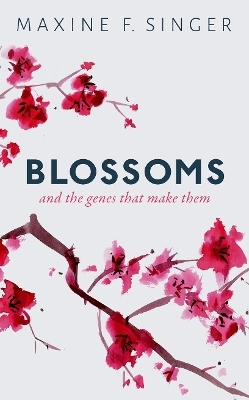
Blossoms
Oxford University Press (Verlag)
978-0-19-881113-8 (ISBN)
How do plants, even if still buried underground, know that it's their time to bloom? What signals them to begin the challenging task of making flowers, and how do they make the variety of flower shapes, colours, and scents? What kind of instructions does the plant carry?
Flowers enrich the beauty of meadows and gardens, but of course, they are not there simply to please us. Biologically, blossoms form a critical aspect of the reproductive cycle of many plants. In this book, the distinguished scientist Maxine Singer explains what we have pieced together about the genetics behind flowering. She describes in a clear and accessible account the key genes which, regulated by other genes, modulated by epigenetic effects, and responding to environmental cues, cause plants to flower at a particular time, and define the variety of flowers. The remarkably intricate processes involved in making flowers have evolved in nature alongside the pollinating birds and insects that the flowers must attract if there is to be another generation. The processes involved in flowering have only been unravelled in the past twenty years, and the implications for ensuring production of food, including fruits and seeds, are profound. This is cutting-edge science, and we have much still to learn, but the story being revealed that lies behind the flowers in our gardens, parks, and fields is proving astonishing.
Maxine Singer received her Ph.D. in 1957 from Yale. At NIH she worked on RNA enzymology and the genetic code. Later, work on defective simian virus 40 genomes led to studies of highly repeated primate DNA and the discovery of a human transposable element. From 1988 through 2002 she was president of the Carnegie Institution of Washington. A member of the Pontifical Academy of Sciences, the American Philosophical Society, and the National Academy of Sciences of the USA, she chaired the Academies' Committee on Science, Engineering and Public Policy, 1999-2005. She served on the Editorial Board of the Proceedings of the National Academy of Sciences of the USA, and the Journal of Biological Chemistry and Science magazine. Maxine has received the Distinguished Presidential Rank Award (1988), the National Medal of Science (1992) and the Public Welfare Medal of the National Academy of Sciences (2007). She is a life member of the International Board of the Weizmann Institute of Science.
Introduction
PART I: What Plants are and What They Can Do
1: Names
2: Plants are like animals only different
3: Sensing the Environment
PART II: How Genes Work
4: How Genes Work
5: Switching Genes On and Off
PART III: Time To Flower
6: Growing Up Green
7: Warm and Cold
8: Light and Dark
PART IV: Shaping a Flower
9: The Construction Site
10: Special Shapes
PART V: Decorating a Flower
11: Painting the Petals
12: The Perfume Factory
A Final Word
Glossary
| Erscheinungsdatum | 09.03.2018 |
|---|---|
| Zusatzinfo | A number of black and white halftones and an 8 page colour plate section |
| Verlagsort | Oxford |
| Sprache | englisch |
| Maße | 142 x 224 mm |
| Gewicht | 308 g |
| Themenwelt | Kunst / Musik / Theater ► Allgemeines / Lexika |
| Sachbuch/Ratgeber ► Natur / Technik | |
| Naturwissenschaften ► Biologie ► Botanik | |
| Naturwissenschaften ► Biologie ► Evolution | |
| Naturwissenschaften ► Biologie ► Genetik / Molekularbiologie | |
| ISBN-10 | 0-19-881113-6 / 0198811136 |
| ISBN-13 | 978-0-19-881113-8 / 9780198811138 |
| Zustand | Neuware |
| Haben Sie eine Frage zum Produkt? |
aus dem Bereich


